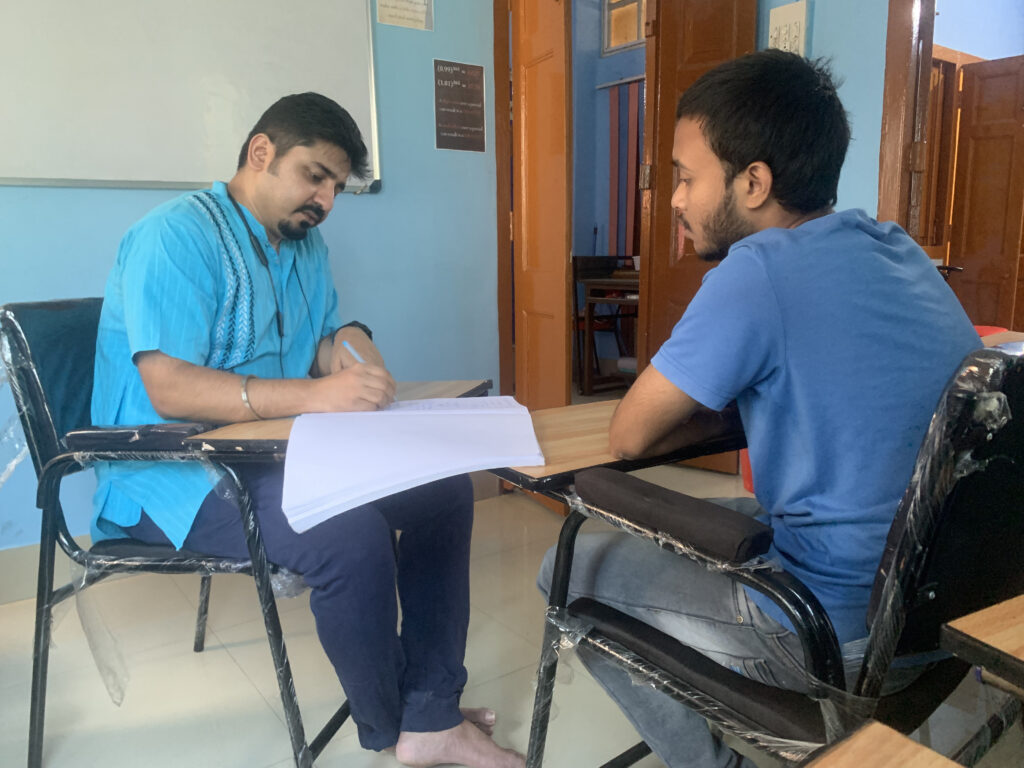The Evolution of CAT Exam
The CAT (Common Admission Test) exam has long been a hallmark for aspiring management students seeking entry into prestigious B-schools in India. Over the years, this exam has undergone significant changes, reflecting the dynamic landscape of education, technology, and industry requirements.
In this article, we will delve into the historical trajectory of the CAT exam, explore its pivotal transformations, and venture into predictions for its future evolution.

The Early Years: Inception and Format
The CAT exam was first conducted in 1950, initiated by the Indian Institutes of Management (IIMs) to streamline the admission process for their MBA programs. Back then, the exam primarily focused on assessing candidates’ proficiency in English language and quantitative aptitude. The paper-based test consisted of sections that gauged verbal ability and mathematical skills.
Technological Advancements and Shift to Online Mode
The turn of the 21st century brought about a significant paradigm shift in the CAT exam format. In 2009, the IIMs collaborated to transition the exam from its traditional paper-based format to a computer-based one. This move marked a watershed moment in the history of the CAT exam, aligning it with the digital age and offering candidates a more efficient and standardized testing experience.
Incorporation of Data Interpretation and Logical Reasoning
Another crucial development in the evolution of the CAT exam was the inclusion of sections on Data Interpretation (DI) and Logical Reasoning (LR). This addition came in response to the changing demands of the business world, which required managers to possess strong analytical and problem-solving skills. This change in the exam pattern broadened the scope of assessment, evaluating candidates’ ability to make informed decisions based on data-driven insights.
Recent Trends in CAT Exam Pattern
In recent years, the CAT exam has continued to adapt to the evolving needs of the industry. The introduction of sectional time limits aimed to test candidates’ time management skills and their ability to perform under pressure. Furthermore, the variable marking scheme, which awards different points for correct and incorrect answers, emphasizes the importance of accuracy.
Future Predictions for the CAT Exam
The trajectory of the CAT exam suggests that it will continue to evolve in response to the changing educational landscape and industry demands. Here are some predictions for the future of the CAT exam:
Incorporation of AI and Machine Learning: As technology advances, the CAT exam could integrate elements of AI and machine learning to personalize the exam experience for each candidate. This could include adapting the difficulty level of questions based on individual performance.

Emphasis on Critical Thinking and Creativity:
The future CAT exam might place a higher emphasis on evaluating candidates’ creative thinking and critical analysis skills. This shift would reflect the growing importance of these skills in a rapidly changing global economy.
Multidisciplinary Assessment:
With the blurring lines between business disciplines, the CAT exam may incorporate sections that assess candidates’ understanding of interdisciplinary concepts, preparing them for diverse roles in the corporate world.
Virtual Reality-based Assessments:
Virtual reality could be leveraged to create immersive assessment scenarios, simulating real-world managerial challenges and evaluating candidates’ decision-making skills in dynamic environments.
Also Read:
Quantitative Aptitude Hacks: Speeding Up Calculation in CAT
Reading Comprehension Techniques for CAT
Past Trends in CAT Exam: A Glance Backward:
The journey of the CAT exam from its inception to the present day has been marked by transformative changes that have shaped its structure and content. Understanding these trends helps us appreciate the exam’s evolution:
1. Paper-Based to Computer-Based:
The CAT exam transitioned from a traditional paper-based format to a computer-based test in 2009. This shift introduced new challenges and opportunities for test-takers, requiring them to adapt to a digital testing environment.
2. Sectional Time Limits:
CAT 2015 saw the introduction of sectional time limits, altering the time allocation strategy for candidates. This change emphasized the importance of time management and efficiency in each section.
3. Changing Question Patterns:
Over the years, CAT has altered its question patterns, focusing on a mix of multiple-choice questions (MCQs) and non-MCQs, such as fill-in-the-blanks and subjective questions. This variation demands diverse problem-solving approaches.
4. Emphasis on Data Interpretation and Logical Reasoning:
Data Interpretation and Logical Reasoning (DILR) gained prominence as a separate section, underscoring the growing importance of analytical and logical thinking in the business world.
5. Revamped Scoring System:
CAT moved from a percentile-based scoring system to a scaled score system, making score interpretation more intuitive for aspirants.

Predicting the Future of CAT Exam:
While predicting the future with absolute certainty is challenging, several trends and insights hint at the possible directions in which the CAT exam may evolve:
1. Increased Emphasis on Technology Skills:
As technology continues to reshape industries, CAT might incorporate questions that assess candidates’ technological acumen and digital literacy.
2. Adaptive Testing:
CAT could potentially introduce adaptive testing, where the difficulty level of questions adjusts based on the candidate’s performance. This would provide a more accurate assessment of a candidate’s true abilities.
3. Integration of Real-World Business Challenges:
The future CAT exam may incorporate case studies and scenarios that mirror real-world business challenges, assessing candidates’ ability to apply theoretical knowledge in practical situations.
4. Data-Driven Decision Making:
Given the importance of data-driven decision-making in the corporate landscape, CAT could incorporate more data interpretation and analysis questions to assess candidates’ quantitative and analytical skills.

FAQs About CAT Exam Syllabus:
Q1: Is CAT the only option for top-tier B-schools?
While CAT is a prominent choice, exams like XAT, SNAP, NMAT, and MAT also provide pathways to reputed B-schools.
Q2: Are the exam patterns of XAT and CAT similar?
XAT and CAT have similarities but also differences. For instance, XAT includes Decision Making and General Knowledge sections in addition to traditional ones.
Q3: How do I decide which test suits my specialization?
Research the focus of each exam. CAT covers a broad spectrum, while other exams may align with specific domains like decision-making or analytical skills.

Unlock Your Potential with Study Break Academy
Are you ready to take your CAT preparation to the next level? Unlock your potential with Study Break Academy – the ultimate destination for CAT aspirants in Kolkata.
Visit our website, www.studybreak.co.in to explore our courses, faculty, and success stories. Take the first step towards a successful CAT journey by booking a call with us today.
ADDRESS:
38, Kabir Road, Southern Avenue,
Near Kalighat Metro Station,
Kolkata, West Bengal 700026
E-MAIL:
ask@studybreak.co.in
TELEPHONE:
+91 90737 27372 | +91 80178 77986 | +91 33 3573 5525
The CAT exam’s evolution reflects the ever-changing demands of the business world. By understanding past trends and predicting future directions, aspirants can better prepare themselves for the challenges that lie ahead. With Study Break Academy’s guidance, aspirants can navigate the evolving CAT landscape with confidence, equipped with the right strategies and knowledge to achieve success.
Ready to embrace the CAT exam’s evolution and secure your path to success? Visit Study Break Academy’s website to explore their comprehensive CAT exam preparation offerings or book a call to embark on a journey that prepares you for the CAT’s changing face. With Study Break Academy, the evolution of CAT becomes an opportunity for triumph.




